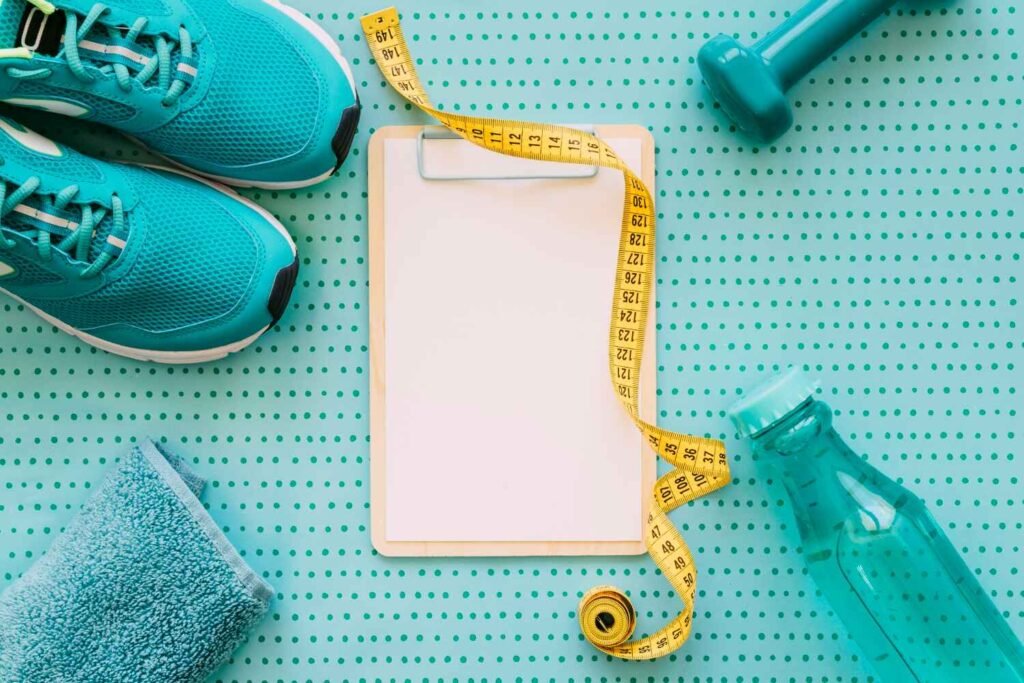
How to Start a Mindfulness Practice: Techniques for Beginners
How to Start a Mindfulness Practice: Techniques for Beginners
Mindfulness is more than just a buzzword—it’s a practical tool that helps you navigate daily life with clarity and calmness. For beginners, starting a mindfulness practice can feel both intriguing and daunting. Where do you begin? What techniques should you try first?
In this guide, you’ll discover easy-to-follow mindfulness techniques, tips for getting started, and practical ways to integrate mindfulness into your daily routine. By the end, you’ll have a clear understanding of how to cultivate a mindful life, even as a beginner.
What is Mindfulness, and Why is it Important?
Mindfulness is the practice of being fully present in the moment, aware of your thoughts, emotions, and surroundings without judgment. This means focusing on what you’re doing right now instead of getting lost in worries about the future or regrets about the past.
The importance of mindfulness lies in its numerous benefits, including:
- Reduced Stress and Anxiety: Mindfulness helps you acknowledge stressful thoughts without getting overwhelmed by them.
- Improved Focus: By staying present, you increase your attention span and productivity.
- Enhanced Emotional Health: Regular mindfulness practice can lead to greater emotional balance and resilience.
- Better Sleep: Mindfulness helps calm a racing mind, making it easier to fall and stay asleep.
For beginners, the key is to start small, remain consistent, and gradually build your practice over time.
Getting Started: Key Principles of Mindfulness
Before diving into specific techniques, it’s essential to understand the foundational principles of mindfulness:
- Non-Judgment: Observe your thoughts without labeling them as “good” or “bad.”
- Acceptance: Acknowledge your thoughts and feelings as they are, without trying to change them immediately.
- Patience: Be kind to yourself as you learn mindfulness. Progress takes time.
- Curiosity: Approach your experiences with a sense of curiosity rather than frustration or resistance.
Remember that mindfulness is a skill, and like any skill, it requires practice and patience.
Simple Mindfulness Techniques for Beginners
Here are three beginner-friendly mindfulness techniques you can start with today:
1. Mindful Breathing: The Foundation of Mindfulness
Why it works: Breathing is something we do automatically, but paying attention to it anchors us in the present moment.
How to do it:
- Find a quiet space where you won’t be disturbed.
- Sit comfortably with your back straight. You can also lie down if you prefer.
- Close your eyes or soften your gaze.
- Take a deep breath in through your nose, allowing your belly to expand. Count to four.
- Hold the breath for a moment, then exhale slowly through your mouth for a count of four.
- Focus on the sensation of your breath as it enters and leaves your body.
- If your mind wanders (which it will), gently bring your attention back to your breath.
Practice Tip: Start with 5 minutes a day and gradually increase to 10 or 15 minutes.
2. Body Scan Meditation: Connect with Your Physical Self
Why it works: This technique helps you become aware of physical sensations, tension, and areas where you’re holding stress.
How to do it:
- Lie down on your back or sit in a comfortable chair.
- Close your eyes and take a few deep breaths to relax.
- Focus on different parts of your body, starting with your toes.
- Slowly move your attention up your body—feet, calves, thighs, stomach, arms, shoulders, neck, and head.
- As you focus on each part, notice any sensations (tingling, tension, warmth).
- If you find tension, breathe into that area and try to release it as you exhale.
Practice Tip: A 10-minute body scan before bedtime can help you relax and improve sleep quality.
3. Mindful Eating: Transform Your Relationship with Food
Why it works: Mindful eating encourages you to savor your food, reducing overeating and increasing enjoyment.
How to do it:
- Sit down for your meal without distractions (no TV, phones, or reading).
- Before eating, take a moment to observe your food. Notice the colors, textures, and aroma.
- Take a small bite and chew slowly. Pay attention to the flavors and sensations in your mouth.
- Put your fork down between bites and fully chew each mouthful before swallowing.
- Notice when you start to feel satisfied, and stop eating when you’re comfortably full.
Practice Tip: Try practicing mindful eating for one meal per day and gradually apply it to more meals.
Incorporating Mindfulness into Daily Life
You don’t need to set aside hours for mindfulness practice. The beauty of mindfulness is that it can be integrated into your everyday activities. Here are a few ideas to help you incorporate mindfulness into your routine:
Mindful Walking: Find Peace on the Go
How to do it:
- Choose a quiet place to walk, such as a park or garden.
- Walk slowly and focus on each step. Notice how your feet touch the ground.
- Pay attention to the sights, sounds, and smells around you.
- If your mind drifts, gently redirect it to the physical sensations of walking.
Practice Tip: Even a 5-minute mindful walk during a break can clear your mind.
Mindful Listening: Be Fully Present in Conversations
How to do it:
- When talking to someone, give them your full attention.
- Listen without planning your response. Focus on their words, tone, and body language.
- Avoid interrupting or letting your mind wander.
- Respond thoughtfully once they’ve finished speaking.
Practice Tip: Mindful listening can strengthen your relationships and improve communication.
Mindful Journaling: Reflect on Your Day
How to do it:
- Set aside 10 minutes at the end of each day.
- Write about your thoughts, emotions, and experiences without judgment.
- Focus on what you felt, rather than what happened.
- Express gratitude for small moments of joy or insight.
Practice Tip: Journaling helps you process emotions and recognize patterns in your thinking.
Common Challenges and How to Overcome Them
Starting a mindfulness practice can be challenging, especially when life gets busy. Here are common obstacles and tips to overcome them:
- “I Don’t Have Time”: Start with just 2 minutes a day. Everyone can find 2 minutes.
- “My Mind Won’t Stop Wandering”: This is normal. Gently redirect your focus without frustration.
- “I Keep Forgetting to Practice”: Set a reminder on your phone or tie mindfulness to an existing habit (e.g., brushing your teeth).
How to Start a Mindfulness Practice: Techniques for Beginners (Part 2)
In the first part of this guide, we covered foundational mindfulness techniques like mindful breathing, body scans, and mindful eating. Now, let’s take your mindfulness practice a step further. Whether you’re ready to try more advanced techniques or want practical strategies to stay consistent, this section will provide the tools to deepen your mindfulness journey.
Advanced Mindfulness Techniques for Beginners
Once you’ve built a foundation, it’s time to expand your mindfulness toolbox. These techniques will help you go beyond basic practices and explore new ways to stay present.
1. Loving-Kindness Meditation: Cultivate Compassion
Why it works: This practice focuses on generating feelings of kindness and love towards yourself and others, enhancing emotional well-being and reducing negativity.
How to do it:
- Sit comfortably and close your eyes.
- Take a few deep breaths to center yourself.
- Silently repeat phrases like:
- “May I be happy.”
- “May I be healthy.”
- “May I be safe.”
- “May I live with ease.”
- After focusing on yourself, extend these wishes to loved ones, acquaintances, and even people you find challenging.
- End by extending kindness to all living beings: “May all beings be happy, healthy, safe, and live with ease.”
Practice Tip: Start with 10 minutes a day. This practice can boost feelings of compassion and reduce anxiety.
2. Mindful Observation: Deepen Your Awareness
Why it works: This technique heightens your awareness of the world around you, helping you stay present in your environment.
How to do it:
- Choose a natural object, such as a flower, leaf, or cloud.
- Spend 3-5 minutes focusing solely on this object.
- Observe its details: color, shape, texture, and movement.
- Let go of any thoughts or distractions and simply be with the object.
Practice Tip: This exercise sharpens your attention and can be a refreshing break during a busy day.
3. Five Senses Exercise: Anchor Yourself in the Present
Why it works: Engaging all five senses helps ground you in the here and now, reducing stress and intrusive thoughts.
How to do it:
- Sight: Notice 5 things you can see. Focus on details you might usually overlook.
- Touch: Identify 4 things you can feel (e.g., the texture of your clothes or the air on your skin).
- Hearing: Listen for 3 distinct sounds, near or far.
- Smell: Notice 2 different scents around you.
- Taste: Focus on 1 thing you can taste, even if it’s just your breath.
Practice Tip: This exercise takes only a few minutes and is perfect for stressful moments.
Deepening Your Mindfulness Practice
Now that you’ve explored both basic and advanced techniques, the next step is maintaining consistency and deepening your practice. Here are practical ways to make mindfulness a lasting habit.
Create a Dedicated Mindfulness Space
Having a specific place to practice mindfulness can enhance your commitment. This doesn’t have to be a large space—just a quiet, comfortable corner where you feel relaxed.
Ideas for your space:
- Include a cushion or comfortable chair.
- Use calming elements like candles, plants, or soft lighting.
- Keep it clutter-free to promote a sense of calm.
Practice Tip: Visiting this space daily helps establish a routine, even if you only practice for a few minutes.
Set Mindfulness Reminders
Life gets busy, and it’s easy to forget to practice mindfulness. Setting reminders can help you stay on track.
Ways to set reminders:
- Phone Alarms: Schedule 5-minute mindfulness breaks throughout the day.
- Visual Cues: Sticky notes or screensavers with prompts like “Breathe” or “Stay Present.”
- Habit Stacking: Attach mindfulness to daily activities (e.g., take 3 deep breaths before starting your morning coffee).
Practice Tip: Consistent reminders help integrate mindfulness seamlessly into your routine.
Join a Mindfulness Group or Class
Practicing mindfulness with others can provide support and motivation. Whether online or in-person, mindfulness groups offer a sense of community and accountability.
Benefits of group practice:
- Shared Experience: Learn from others’ challenges and successes.
- Guided Meditations: Professional guidance can deepen your practice.
- Accountability: Regular meetings help you stay committed.
Practice Tip: Many communities offer free mindfulness groups or classes, making it easy to get started.
Overcoming Common Mindfulness Challenges
Even with the best intentions, challenges will arise. Here’s how to navigate common obstacles to keep your mindfulness journey on track.
Challenge 1: Difficulty Staying Consistent
Solution: Start small and be realistic. It’s better to practice for 2 minutes daily than to aim for 30 minutes and give up.
- Tip: Set a consistent time each day (e.g., right after waking up).
Challenge 2: Feeling Restless or Bored
Solution: It’s normal to feel restless when starting mindfulness. Acknowledge the discomfort and keep going.
- Tip: Try different techniques to keep things fresh, such as mindful walking or guided meditations.
Challenge 3: Doubting Your Progress
Solution: Mindfulness is a journey, not a destination. Progress may not be obvious, but consistency leads to benefits over time.
- Tip: Reflect on subtle changes, such as improved focus or reduced anxiety.
Integrating Mindfulness into Everyday Tasks
Mindfulness doesn’t have to be confined to formal practice sessions. Everyday activities can become opportunities to stay present.
Mindful Cleaning
- Focus on the motions of sweeping, scrubbing, or washing dishes.
- Notice the sounds, textures, and sensations involved.
- Treat the task as a form of meditation rather than a chore.
Mindful Commuting
- If you drive, focus on the sensations of steering and the sights around you.
- On public transport, observe the environment or focus on your breath.
- Avoid distractions like phones or music and simply be present.
The Long-Term Benefits of Mindfulness
By consistently practicing mindfulness, you’ll experience lasting changes in your mental, emotional, and even physical health. Here’s what you can look forward to:
- Reduced Stress Levels: Mindfulness helps you manage stress by teaching you to respond thoughtfully rather than react impulsively.
- Improved Focus and Clarity: Regular practice enhances concentration, making it easier to tackle daily tasks.
- Enhanced Relationships: Being present helps you listen more deeply and respond with empathy.
- Greater Emotional Resilience: Mindfulness equips you with tools to handle difficult emotions without being overwhelmed.
How to Start a Mindfulness Practice: Techniques for Beginners (Part 3)
In the previous sections, we explored foundational and advanced mindfulness techniques, along with tips for integrating mindfulness into daily life. Now, let’s dive into resources, guided practices, and strategies for sustaining your mindfulness journey over the long term. With the right tools and mindset, you can turn mindfulness into a lifelong habit.
Guided Mindfulness Practices to Deepen Your Experience
Guided mindfulness sessions can be particularly helpful for beginners. They offer step-by-step instructions and help keep your mind from wandering. Here are some popular types of guided practices to try:
1. Guided Meditation Apps
Meditation apps are convenient, portable, and often free to start. They offer various mindfulness exercises, from breathing practices to body scans.
Popular Apps to Explore:
- Headspace: Known for its beginner-friendly guided meditations and fun, animated visuals.
- Calm: Offers sleep stories, guided breathing, and meditations to reduce stress and anxiety.
- Insight Timer: A free app with thousands of guided meditations from various mindfulness teachers.
Practice Tip: Try different apps to see which one fits your style and goals.
2. Online Mindfulness Videos
Platforms like YouTube offer countless free guided mindfulness videos. These range from short 5-minute sessions to longer, more immersive practices.
What to Search For:
- “5-minute guided mindfulness meditation”
- “Body scan meditation for relaxation”
- “Guided loving-kindness meditation”
Practice Tip: Bookmark your favorite videos so you can return to them easily.
3. Podcasts for Mindfulness Practice
Mindfulness podcasts can introduce you to new techniques, insights, and guided meditations on the go.
Top Podcasts to Try:
- “The Daily Meditation Podcast”: Short, daily guided meditations.
- “On Being” with Krista Tippett: Deep conversations about mindfulness and living a meaningful life.
- “Ten Percent Happier”: A blend of interviews, advice, and guided practices.
Practice Tip: Listen during your commute or while doing light chores to incorporate mindfulness effortlessly.
Books to Support Your Mindfulness Journey
Books provide a deeper understanding of mindfulness and offer practical exercises you can integrate into your daily routine.
1. “Wherever You Go, There You Are” by Jon Kabat-Zinn
Why It’s Helpful: This classic book introduces mindfulness in a straightforward, accessible way. It’s perfect for beginners and emphasizes mindfulness as a way of being.
2. “The Miracle of Mindfulness” by Thich Nhat Hanh
Why It’s Helpful: Written by a renowned Zen master, this book teaches simple yet powerful techniques for bringing mindfulness to everyday activities.
3. “Radical Acceptance” by Tara Brach
Why It’s Helpful: If self-criticism or anxiety holds you back, this book helps you practice mindfulness and self-compassion.
Practice Tip: Set aside 10-15 minutes daily to read a chapter and reflect on the exercises.
Creating a Sustainable Mindfulness Routine
Starting a mindfulness practice is one thing; making it a lasting habit is another. Here are some practical tips for building a sustainable routine.
1. Start Small and Be Consistent
Consistency is more important than duration. Aim to practice mindfulness daily, even if it’s just for a few minutes.
Example Routine:
- Morning: 5 minutes of mindful breathing after waking up.
- Afternoon: 2-minute mindfulness break to refocus during work.
- Evening: 10-minute body scan before bed.
2. Set Mindfulness Goals
Setting clear goals helps you stay motivated. Examples of mindfulness goals include:
- Short-Term Goal: Practice mindfulness for 5 minutes every day for one week.
- Medium-Term Goal: Complete a 30-day mindfulness challenge.
- Long-Term Goal: Attend a weekend mindfulness retreat within the next 6 months.
Practice Tip: Track your progress with a journal or habit tracker.
3. Reflect on Your Mindfulness Journey
Regular reflection helps you see the benefits of mindfulness and identify areas for improvement.
Ways to Reflect:
- Mindfulness Journal: Write about your thoughts, feelings, and experiences after each practice.
- Weekly Check-In: Reflect on how mindfulness has affected your stress, focus, or relationships.
- Gratitude Practice: End your day by listing 3 things you’re grateful for.
Mindfulness for Specific Life Challenges
Mindfulness can be a powerful tool for dealing with specific challenges like stress, anxiety, and sleep issues. Here’s how to tailor your practice:
Mindfulness for Stress Relief
When stress hits, mindfulness helps you pause and respond calmly rather than react impulsively.
Quick Stress-Relief Exercise:
- Take a deep breath in for 4 counts.
- Hold for 4 counts.
- Exhale for 6 counts.
- Repeat 3-5 times.
Mindfulness for Anxiety
Anxiety often involves worrying about the future. Mindfulness grounds you in the present moment.
Grounding Technique:
- Name 3 things you can see.
- Name 3 things you can hear.
- Name 3 things you can feel.
This exercise helps interrupt anxious thought loops.
Mindfulness for Better Sleep
Mindfulness calms a racing mind, making it easier to fall asleep.
Bedtime Routine:
- Do a 10-minute body scan.
- Practice mindful breathing for 5 minutes.
- Let go of any thoughts and focus on the sensation of your body relaxing.
Common Myths About Mindfulness (And the Truth)
Let’s clear up some common misconceptions that might be holding you back:
Myth 1: Mindfulness is About Clearing Your Mind
Truth: Mindfulness is about observing your thoughts, not eliminating them. It’s normal for your mind to wander.
Myth 2: Mindfulness Takes a Lot of Time
Truth: Even 2 minutes a day can make a difference. It’s about quality, not quantity.
Myth 3: Mindfulness is Only for Meditation
Truth: You can practice mindfulness during any activity—eating, walking, or talking.



